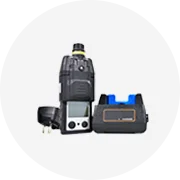Phổ biến trong ngành của bạn

Altech siêu âm đo mức pl320 bể nước siêu âm và bình nhiên liệu cảm biến mức 0.5m đến 15m phạm vi
100,00 US$ - 180,00 US$
Đơn hàng tối thiểu: 1 Cái


Tank Level Meter nước lỏng không dây nước ngầm độ sâu siêu âm cảm biến kỹ thuật số để sử dụng nhà
Sẵn sàng vận chuyển
26,43 US$
Đơn hàng tối thiểu: 2 Cái
Vận chuyển mỗi chiếc: 9,92 US$


Nước ngầm chất lỏng sông giếng giếng khoan kiểm soát mức độ Tank Detector chỉ số cảm biến
75,00 US$ - 99,00 US$
Đơn hàng tối thiểu: 1 Cái
Vận chuyển mỗi chiếc: 62,18 US$


Tank Level Meter nước lỏng không dây nước ngầm độ sâu siêu âm cảm biến kỹ thuật số để sử dụng nhà
Sẵn sàng vận chuyển
32,14 US$ - 35,00 US$
Đơn hàng tối thiểu: 1 Cái
Vận chuyển mỗi chiếc: 19,18 US$


Wnk 4G Không Dây Thông Minh Mực Nước Cảm Biến Tank Giám Sát Không Dây
90,00 US$ - 150,00 US$
Đơn hàng tối thiểu: 1 Bộ
Vận chuyển mỗi chiếc: 30,00 US$


Holykell OEM Tự Hoại Xe Tăng Mực Nước Cảm Biến Đo HPT605
115,00 US$ - 169,00 US$
Đơn hàng tối thiểu: 1 Cái
Vận chuyển mỗi chiếc: 81,19 US$

Atech bùn cảm biến mức chất lỏng pl307 thép không gỉ chống tắc nghẽn bể tự hoại chỉ báo mức nước thải cảm biến
50,00 US$ - 120,00 US$
Đơn hàng tối thiểu: 1 Cái

L709 chống tắc nghẽn mặt bích chìm loại bể tự hoại dầu nặng dầu khí cảm biến mức thủy tĩnh
160,00 US$ - 200,00 US$
Đơn hàng tối thiểu: 1 Cái
Vận chuyển mỗi chiếc: 72,20 US$

Độ chính xác cao RS485 giao diện chống ăn mòn bể nước thải phân tự hoại xe tải cảm biến mức
219,00 US$
Đơn hàng tối thiểu: 1 Bộ
Vận chuyển mỗi chiếc: 27,05 US$

GLTV7E Xử Lý Nước Phân Hút Xe Tải Tự Hoại Tank Cảm Biến Mức
142,00 US$ - 190,00 US$
Đơn hàng tối thiểu: 1 Cái

Zigbee bể không dây nước dầu mức float cảm biến tự hoại chỉ báo mức
225,00 US$ - 250,00 US$
Đơn hàng tối thiểu: 2 Cái

Chỉ Báo Mức Độ Bể Tự Hoại Chống Tắc Nghẽn Cảm Biến Mực Nước Thải
50,00 US$ - 90,00 US$
Đơn hàng tối thiểu: 5 Cái
Vận chuyển mỗi chiếc: 8,76 US$
Các danh mục hàng đầu
Giới thiệu về cảm biến mức bể tự hoại
Ngày nay, cảm biến mức bể tự hoại không còn là điều mới mẻ đối với những người bình thường và không còn bị coi là điều cấm kỵ khi sử dụng. Nếu bạn đang tìm kiếm niềm vui áp chót đó, bạn phải kiểm tra sự bao la. Bộ sưu tập cảm biến mức bể tự hoại tại Alibaba.com. Những gợi cảm và cong. cảm biến mức bể tự hoại đáng giá từng xu và chắc chắn làm cho đêm đó trở nên đặc biệt đối với bạn. Những con búp bê này có ngoại hình giống như thật, bắt đầu từ tóc đến ngón chân theo mọi nghĩa.
Cho dù bạn là một người cô đơn đang tìm kiếm một người bạn đời như cuộc sống hay một cặp vợ chồng muốn thêm gia vị cho cuộc sống của họ, bạn đều có thể sử dụng chúng . cảm biến mức bể tự hoại để đốt cháy ngọn lửa đó. Những ngoạn mục. cảm biến mức bể tự hoại có thể tùy chỉnh theo mong đợi của bạn. Những điều tuyệt vời. cảm biến mức bể tự hoại có sẵn ở cả phiên bản dành cho nam và nữ và được làm từ silicone cấp y tế để sử dụng an toàn. Hãy sở hữu ngay bây giờ và tận hưởng một đêm đam mê và cháy bỏng.
Alibaba.com cung cấp những điều tuyệt vời này. cảm biến mức bể tự hoại ở mọi hình dạng cơ thể, kích thước và sắc tộc. Dù yêu cầu của bạn đối với. cảm biến mức bể tự hoại, bạn có thể tải tất cả chúng trên trang web. Những cái này. cảm biến mức bể tự hoại được tạo hình bởi những người thợ thủ công giỏi nhất và mọi chi tiết phức tạp đều được kiểm tra kỹ lưỡng. Những con búp bê này có mắt, tóc, móng tay và tất cả các bộ phận cơ thể khác tương tự như người thật.
Alibaba.com cung cấp nhiều loại. cảm biến mức bể tự hoại có thể giúp bạn mua các sản phẩm phù hợp với ngân sách và các yêu cầu khác của bạn. Các sản phẩm này an toàn để sử dụng, được chứng nhận và thân thiện với môi trường trong tự nhiên. Đơn đặt hàng OEM có sẵn trên các sản phẩm này.
Cho dù bạn là một người cô đơn đang tìm kiếm một người bạn đời như cuộc sống hay một cặp vợ chồng muốn thêm gia vị cho cuộc sống của họ, bạn đều có thể sử dụng chúng . cảm biến mức bể tự hoại để đốt cháy ngọn lửa đó. Những ngoạn mục. cảm biến mức bể tự hoại có thể tùy chỉnh theo mong đợi của bạn. Những điều tuyệt vời. cảm biến mức bể tự hoại có sẵn ở cả phiên bản dành cho nam và nữ và được làm từ silicone cấp y tế để sử dụng an toàn. Hãy sở hữu ngay bây giờ và tận hưởng một đêm đam mê và cháy bỏng.
Alibaba.com cung cấp những điều tuyệt vời này. cảm biến mức bể tự hoại ở mọi hình dạng cơ thể, kích thước và sắc tộc. Dù yêu cầu của bạn đối với. cảm biến mức bể tự hoại, bạn có thể tải tất cả chúng trên trang web. Những cái này. cảm biến mức bể tự hoại được tạo hình bởi những người thợ thủ công giỏi nhất và mọi chi tiết phức tạp đều được kiểm tra kỹ lưỡng. Những con búp bê này có mắt, tóc, móng tay và tất cả các bộ phận cơ thể khác tương tự như người thật.
Alibaba.com cung cấp nhiều loại. cảm biến mức bể tự hoại có thể giúp bạn mua các sản phẩm phù hợp với ngân sách và các yêu cầu khác của bạn. Các sản phẩm này an toàn để sử dụng, được chứng nhận và thân thiện với môi trường trong tự nhiên. Đơn đặt hàng OEM có sẵn trên các sản phẩm này.











